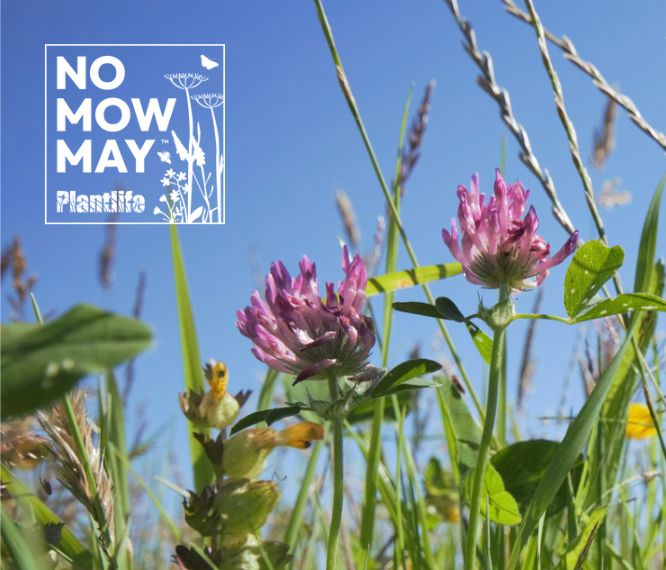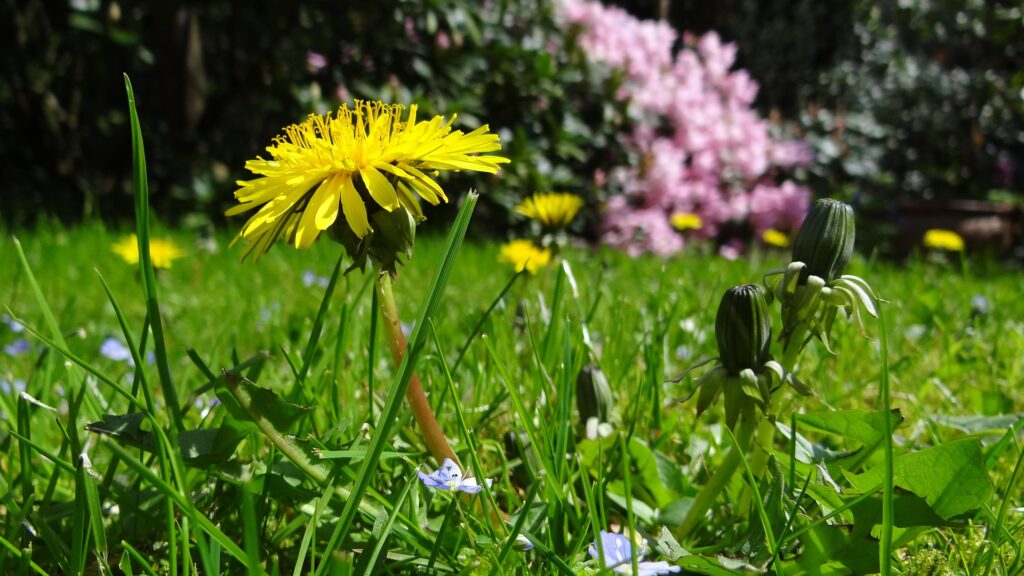Biodiversity needs all the help it can get…
Behind our pithy headline is the sobering statistic that is oft-quoted; the UK has lost 97% of its wildflower meadows since 1930.
Along with the destruction of over 200,000 miles of hedgerows, 50% of our ancient woodland and heathland has disappeared. The resulting effect on wildlife has been catastrophic, with 41% of all species seeing a decline since 1970 and a complete loss of 150 species in the last 100 years.
With classic meadow plants like Ragged Robin, Field Scabious and Devil’s-bit Scabious on the Near Threatened list, British conservation charity Plantlife is once again encouraging the lawn-loving public to get involved in their No-Mow-May campaign, liberating lawns up and down the country.

There is an astonishing array of diversity of wildflowers growing on Britain’s lawns and simple changes in mowing (or rather, not mowing) can result in enough nectar for ten times more bees and other pollinators. With an estimated 23m gardens in the UK, how lawns are tended makes a huge difference to the prospects for wild plants and other wildlife. Simply popping the mower in the shed for the month of May can deliver big gains for nature, communities and the climate.
With No-Mow-May now in its fourth year, Plantlife has revealed that the top five most common recorded plants in lawns are daisies, creeping buttercups, yellow rattle, common bird’s foot trefoil and field forget-me-nots.
In particular, the proliferation of yellow rattle on British lawns has been pleasing to note as the semi-parasitic plant possesses an unrivaled ability to act as “nature’s lawnmower”, reducing coarser grasses and allowing more delicate wildflowers to flourish.
Dandelions are also a crucial plant to nurture this spring as they act as a superfood for bees and butterflies. Despite being outnumbered by daisies 85 to 1 on a typical 100m2 lawn, dandelions produce 9% of the lawn’s pollen and 37% of its nectar sugar.

Meanwhile, the Wildlife Trusts and Royal Horticultural Society (RHS) have launched a campaign called Wild About Gardens to encourage gardeners to champion dandelions and other wildflowers by letting lawns grow longer.
Helen Bostock, RHS Senior Wildlife Specialist, explained: “Lawns, while central to many garden designs, are often overlooked as important ecosystems in favour of the plants in beds that border them. But they’re home to a huge amount of wildlife and help mitigate the impact of climate change. We want to inspire people to get up close and personal with their lawns this year, discover what can be found in their swathes of green and dabble with new, more hands-off means of management.”
(You can download the excellent nine-page guide to a wild lawn here.)
Let’s all go wild this May and do our bit to liberate our lawns. We’d love to see your efforts so please email your photos and your stories of your No-Mow-May endeavours and discoveries to wildflower@wildflowerturf.co.uk.